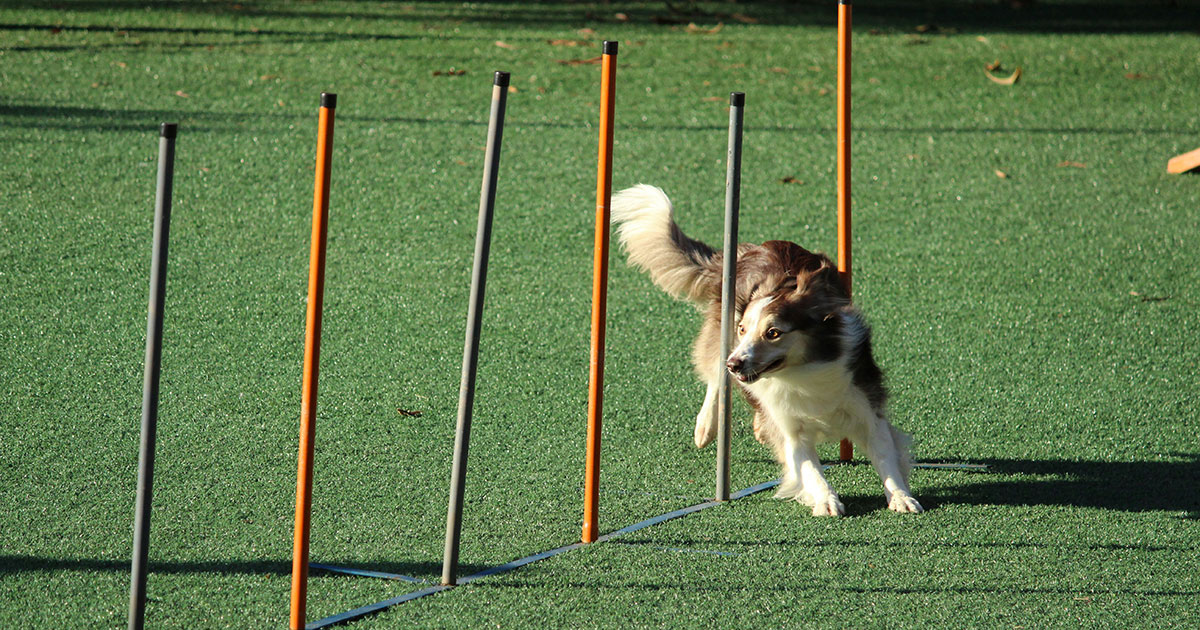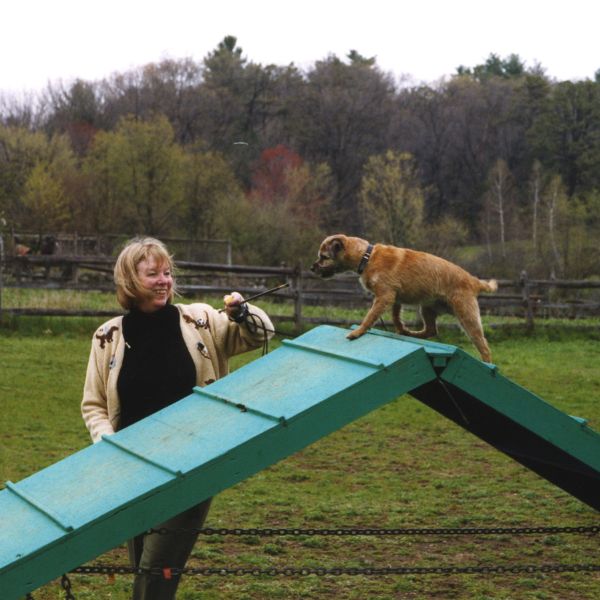
The Training Game is a great way to sharpen your shaping skills and have fun at the same time. It allows you to see and experience other trainers’ decision points, and to be aware of what you might have done instead. It also allows trainers to make mistakes, and learn from them, without confusing some poor animal or unsuspecting person! Maybe most valuable of all, it allows you to see the training process from the viewpoint of the trainee, which is often a highly illuminating experience. The training game also helps us get rid of the superstitious behavior of putting the blame for problems on the person or animal we are working with, instead of on the training contingencies, where it belongs.
The Rules
While this game may be played by two people, larger groups are more fun. In a classroom or larger group, divide up into groups of six to eight. In each group, one person is selected as the Animal, and goes out of hearing range. The others choose a Trainer and a behavior for the Trainer to shape.
The behavior must be something easy to do physically, which everyone can see. Some favorites are turning in a circle, pouring or drinking water, turning on a light switch, picking up an object, opening or closing a door or window, or marking on a blackboard. Avoid two- or three-step behaviors unless you are deliberately working on behavior chains.
The behavior must be something socially acceptable; no disrobing, no behavior (like lying on the floor or standing on a table) which is not polite in public. Don’t pick a behavior involving touching other people! The behavior may involve a prop.
The Trainer will use a clicker, handclap, or other noise as a conditioned reinforcer. Each time the Animal hears the sound, he or she must return to the trainer and get an imaginary treat. (This prevents the Animal from just standing in one spot and trying to think, which gives you nothing to reinforce.)
There should be no talking during the shaping; the point of the game is that shaping is a non-verbal process. However, cheers, groans, laughter, and applause are not only permitted but encouraged. When the behavior is accomplished, most groups tend to burst into applause. The Animal then becomes the Trainer, and the group chooses another Animal. The new Animal leaves the room; the group chooses a new behavior, and the session starts again. When everyone has been both Trainer and Animal, the game is complete. This usually takes 60-90 minutes. An open discussion after the game can be useful and entertaining.
Helpful Hints
If you get totally “stuck,” and the animal has either stopped working altogether or is uselessly repeating the same action over and over, here are some things you can try.
- Change the environment by taking the group to another part of the room.
- Try a new behavior. Once your animal is working again, you can go back to the target behavior.
- Be generous with reinforcements; it’s better to reinforce some behavior, even the wrong behavior than to reinforce nothing at all.
- Try using a prompt. For example, to get someone to bend over, you might drop an object on the floor—a key ring, say—and reinforce the person for leaning down to pick it up.
- Check to see if you are trying to train two behaviors at once, or if what you want is really a chain; if so, remember that you will have to train the end behavior first.
Variations
The Built-in Delay
Have three people hold hands. The one at the right hand end of the group is the Trainer. When she wants to reinforce the Animal, she squeezes the middle person’s hand; that person squeezes the hand of the third person, who then clicks or says “Good.” Watch what goes wrong with the shaping (by Marian Breland Bailey and Robert Bailey.)
The Group Cheer
Instead of picking one Trainer, let the whole group cheer and clap when the Animal does something deserving of reinforcement, and fall silent when the behavior is not improving. The group can travel around in a building or outdoors, teaching the Animal to fetch something from a distance, go over an obstacle, etc. Fun for kids, especially (by Janet Lewis.)
Adding a Cue
Divide the group in half. Separate the two groups. Inform one group that they are the Trainers. They will pick a word to use as a reinforcer, and an action (patting the hair, coughing, pulling the ear) as a conditioned stimulus. Tell the other group that they are the Animals. Each Animal will offer one or more simple behaviors, such as turning, clapping, or waving. Pair up each Trainer with an Animal. The Animal must offer behavior. The Trainer must select a behavior, reinforce it, and then bring it under control of a conditioned stimulus. To do this, the trainer establishes the behavior on a variable ratio schedule (that is, the subject is able to repeat the behavior two or three times for each click and reinforcer). When this has been accomplished, the Trainer presents the action that is going to be the cue, and reinforces the behavior in the presence of the cue. The Trainer does not reinforce any behavior that occurs in the absence of the cue. By alternating between short periods of cue-present and cue-absent, the Trainer can shape the behavior of responding with the correct behavior when the cue has been given, and waiting, without offering other behavior, when the cue is absent.
The task is completed when the Trainer can demonstrate to others in the group that his Animal waits for the cue (a cough, say) and then, when the cue is given, immediately performs the behavior correctly until clicked. At this point it is always worthwhile to ask the human subject these two questions: 1)What is the behavior? (They will usually answer correctly) and 2) What is the cue? They may not have the faintest idea. One can often demonstrate good stimulus control of an operant behavior, in a human subject, without the subject being consciously aware of the nature of the cue. Apparently, the part of the brain that learns environmental cues of this sort is not the verbal, “aware” part of the brain. This exercise often serves as a nifty demonstration of that fact. It can be surprising and illuminating to the spectators.
Note: This article was first published in a slightly different form in the Don’t Shoot The Dog Study Guide by James Kopp. Sunshine Books, Inc. 1995. We regularly review our content to ensure that the principles and techniques remain valuable and relevant. However, best practices continue to evolve. If you notice anything that may need updating, please feel free to contact us at editor@clickertraining.com.

